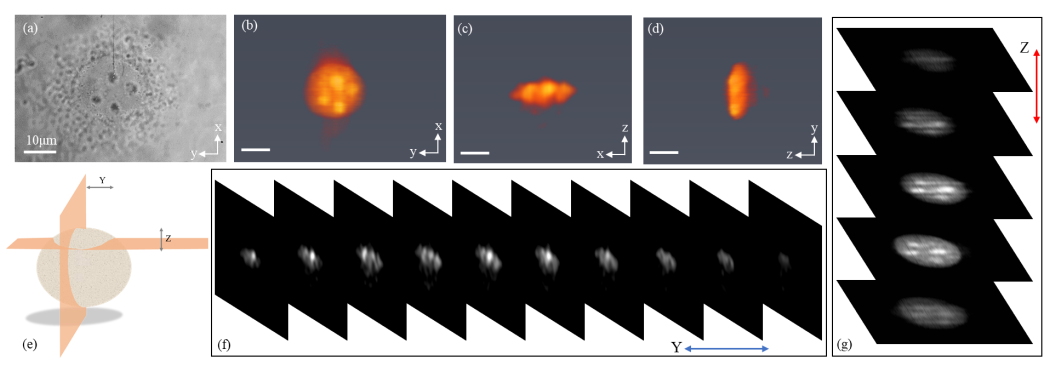The research team of Nanooptoelectronics Frontier Science Center has made important progress in the research of new single-objective optical imaging technology
From: Nanoelectronics Frontier Science Center
In traditional light-plate fluorescence microscopy, two vertically aligned objectives are used for light excitation and signal collection respectively. The matching relationship between the numerical aperture of the objective and its working distance should be considered in the design of the optical microscope system of such double objective, and the utilization of the objective with large numerical aperture is limited, resulting in limited spatial resolution. At the same time, the optical path structure with double objective lens placed vertically also makes the adjustment of imaging system complicated and inefficient, so the development of fluorescence microscopy system with single objective light plate is particularly important.
Based on the research environment above, the team invented a single objective light plate fluorescence imaging system combined with a micro-mirror array. As shown in Figure 1, this micro-mirror array is composed of a series of flat-shaped micro-mirrors arranged at equal distances, each of which maintains the same tilt Angle. When the exciting light plate is planar excited on the sample, the fluorescence information generated will be collected by the same objective lens, and through the micro-mirror array, the fluorescence information propagated along the axis will be changed into a two-dimensional plane propagated perpendicular to the optical axis, which will be received by the subsequent imaging unit. The single objective light plate fluorescence imaging technology successfully realized the imaging of 10um/2um fluorescent pellets and living cells, as shown in Figure 2.
Figure 1. Schematic diagram of fluorescence microscopic imaging light path of single objective light plate based on micromirror array

Figure 2. Display of COS-7 live cell imaging results
This new single-objective photoplate imaging method innovatively improves the traditional photoplate fluorescence imaging structurally, and makes it easier to upgrade the ordinary fluorescence microscopy system to photoplate imaging, and has broad application prospects in the field of high spatiotemporal resolution imaging.
The co-first authors of the paper are Yanhui CAI, PhD, School of Physics, Peking University, 2016, and Yizhu Chen, PhD, Pennsylvania State University. The corresponding author is Kebin Shi, a researcher at Peking University.
The research was supported by the Major Research Program of the National Natural Science Foundation of China, the National Biomedical Imaging Science Center and the Major Basic and Applied Basic Research Project of Guangdong Province.




